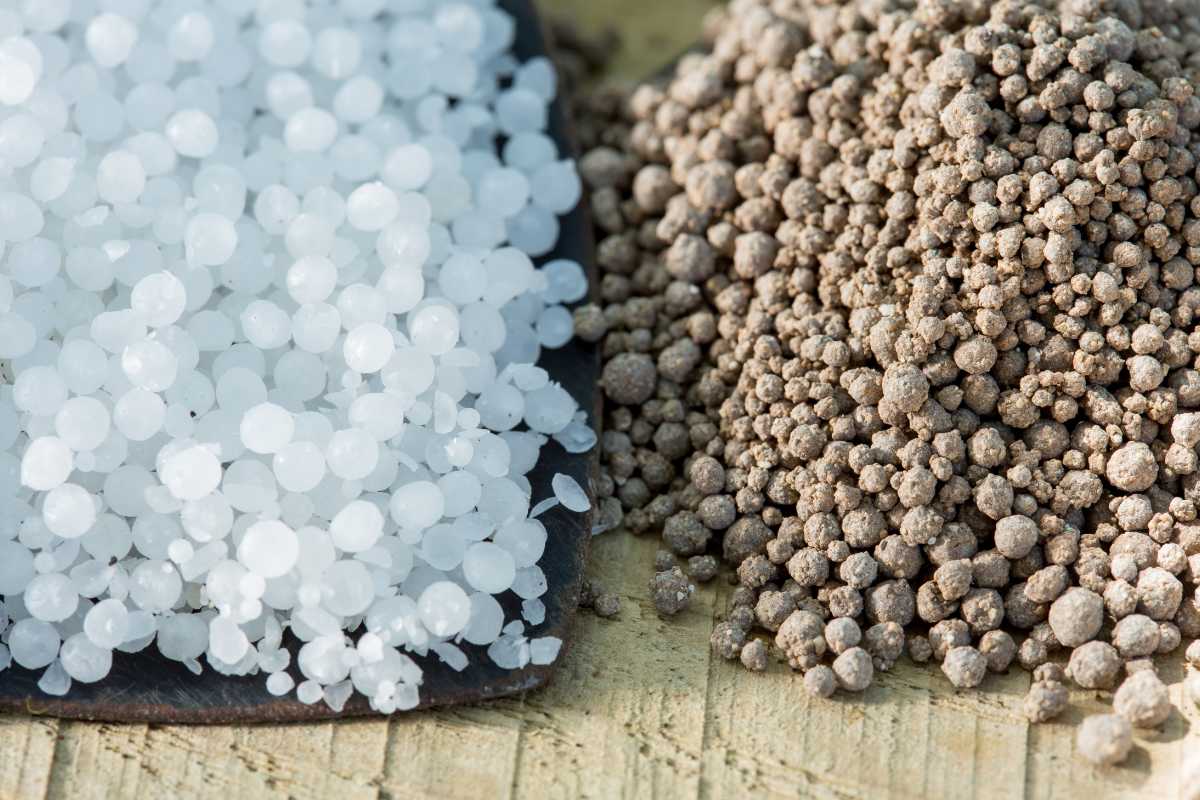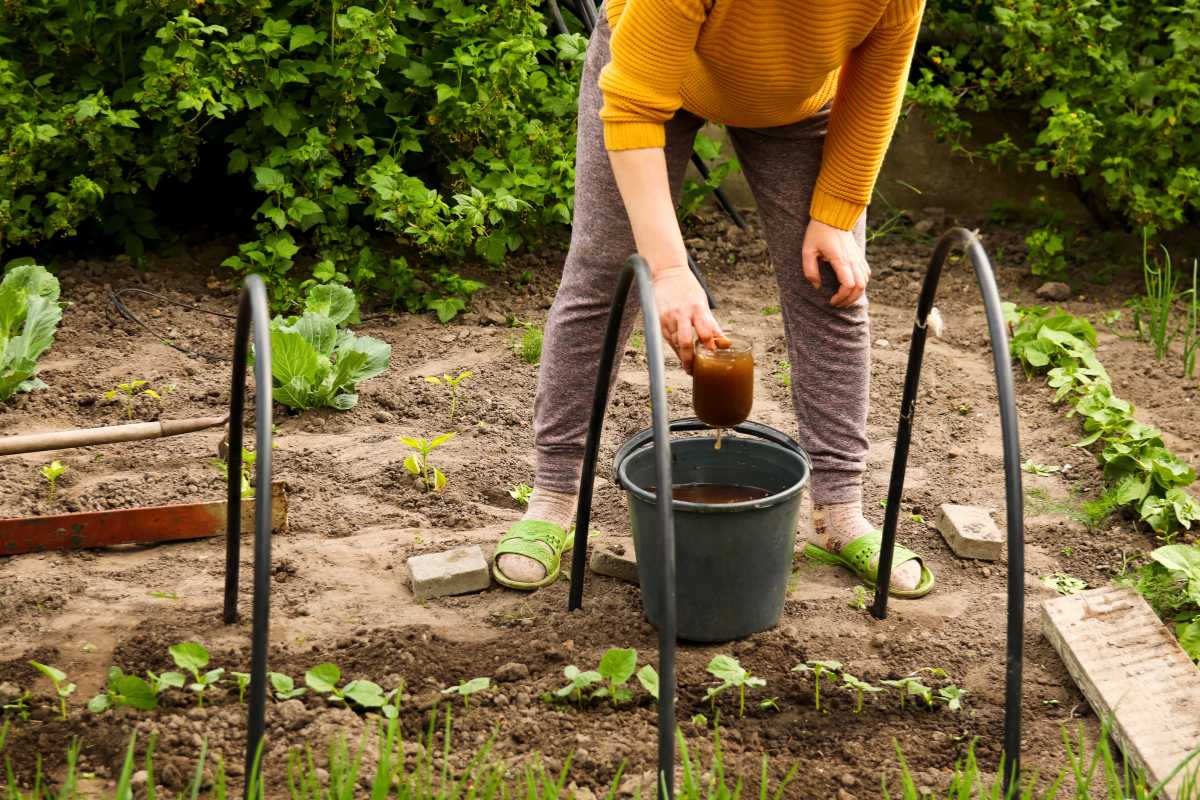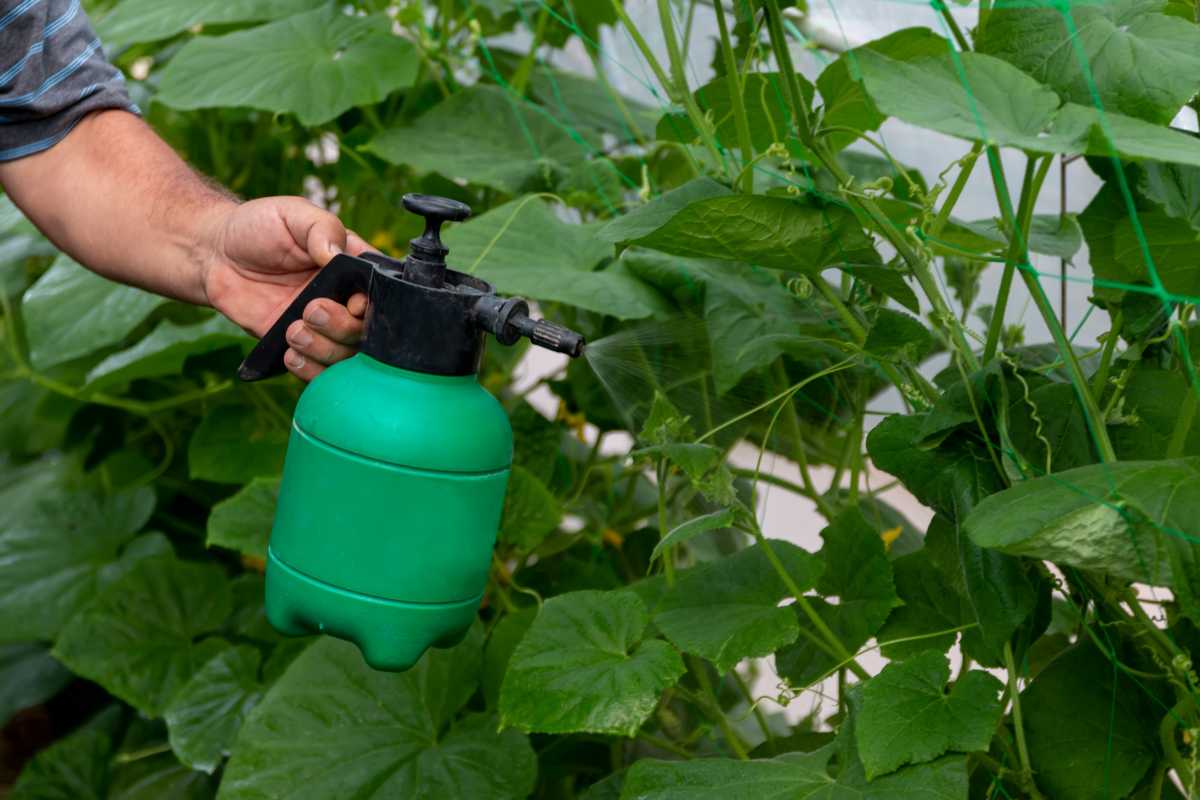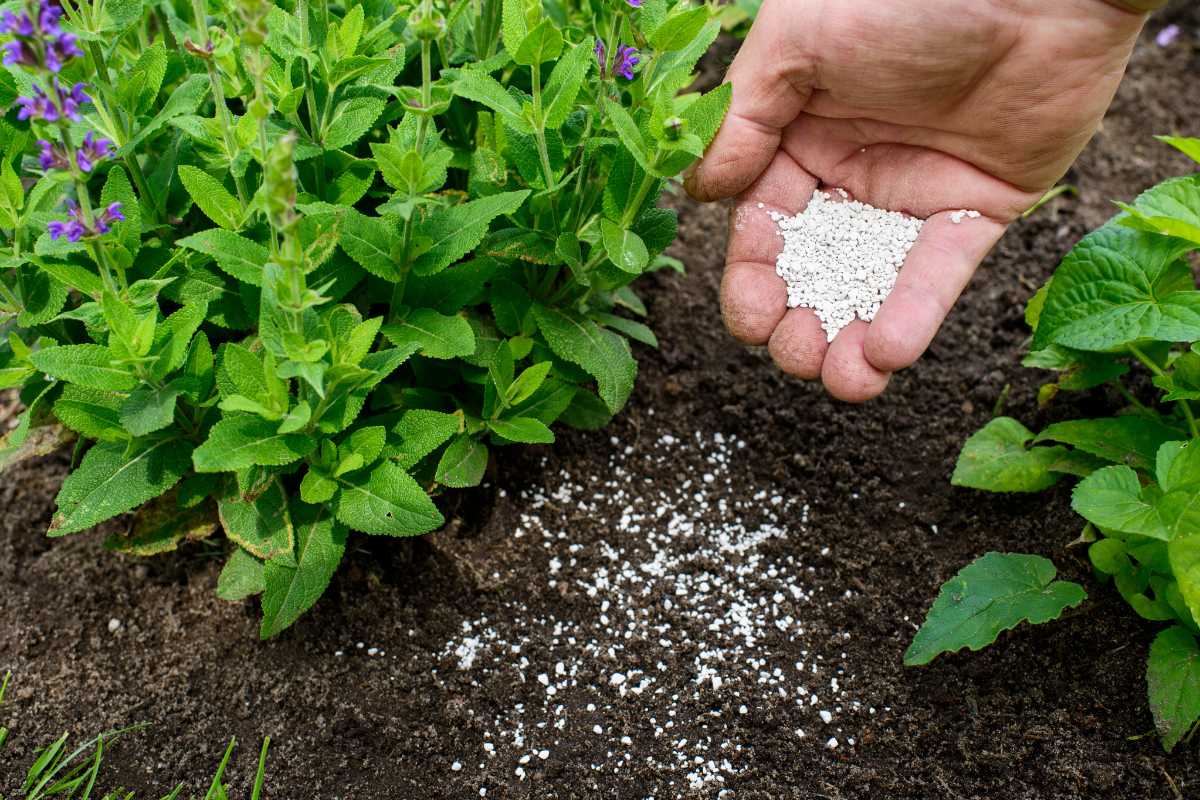Vegetable gardens can use fertilizers to help grow healthy plants, but not all fertilizers are created equal. It’s important to know what types of fertilizer will work best for growing vegetables.
There are many different types of fertilizers for vegetable gardens. In this buying guide, I’ll go over the best fertilizer for a vegetable garden and help you decide which ones will benefit your garden most.
Best Fertilizers for Vegetables
1. Miracle-Gro Watering Can Singles
The Miracle-Gro Watering Can Singles fertilizer comes in as a water-soluble fertilizer in the form of powder. It is individually packaged for convenience, and one packet is added to your watering can every one to two weeks.
It is a multi-purpose fertilizer but can be used effectively on vegetables. However, Miracle-Gro products are not certified organic, so it is not recommended if you want to keep your vegetables strictly organic.
- Related: Organic Gardening Guide
2. Shultz All Purpose Plant Food Plus
The Shultz All Purpose Plant Food Plus is another one that is not organic, but like Miracle-Gro, its price makes it attractive.
This one is also multipurpose and is great for indoor or pot-based vegetable gardens. It is a liquid that you add to your can every time you water your plants.
3. Down to Earth Vegetable Garden Fertilizer
The Down to Earth Vegetable Garden Fertilizer is an organic mix that’s designed to be dug into the soil or used as a mulch, much like compost.
It works great with fruiting plants like tomatoes and peppers, but it can be used with any vegetables and herbs. You can use it as part of a potting soil mix and can be used for indoor vegetable gardening, as well as in your outdoor vegetable garden.
4. Jacks Classic No.4 All Purpose Fertilizer
The Jack’s Classic All Purpose Fertilizer is another chemical-based fertilizer that is not suitable for organic gardens. It is a liquid fertilizer that you add to your watering can and can keep releasing nutrients for up to four months.
It is more suited to outdoor vegetable gardens. Keep in mind if you are using chemical fertilizer to try and not get it on the fruit. Be sure to wash all your vegetables thoroughly before you eat them.
5. Espoma Organic Plant-tone
The Espoma Organic Plant-tone multipurpose organic fertilizer is great for vegetables. Either dig it into the soil, sprinkle it on top, or dissolve a pinch in water to create a liquid fertilizer.
6. Dr. Earth Organic Fertilizer
The Dr. Earth Organic blend of fertilizer is 100% organic and contains beneficial microbes as well as nutrients. You can dig it into the grow site, use it as a mulch, or mix it with water to make a “compost tea style” liquid fertilizer. It’s pet-safe and works well on fruiting plants like tomatoes.
7. Jobe’s Vegetable and Tomato Plant Food
The Job’es Plant Food is an organic certified granular fertilizer that also contains microorganisms to improve the health of the soil condition.
It can be mixed with water, dug in when you plant out your vegetables, or spread on top of the soil and watered in.
How to Choose Fertilizers for Vegetables
While most fertilizers are multipurpose, different vegetables need different nutrients. If you are growing many different plants, then an all-purpose fertilizer is your best bet, but you should keep in mind the specific nutrients needed for each plant.
Learn more about the Various Fertilizer Types.
Nutrients for Vegetables

Most fertilizer labels have an NPK ratio, which means the percentage of nitrogen (N), phosphorus (P), and potassium (K), the essential nutrients.
These ratings are displayed as a series of numbers, like 10-10-10 for a balanced fertilizer. The first number relates to the nitrogen content, the second to phosphorus, and the third to potassium.
Below I’ve listed the most popular vegetables to grow and detailed what mix of nutrients is beneficial.
- Tomatoes – This fruiting vegetable plant has different requirements depending on the stage of growth. When the seedlings are starting off, they will need phosphorus to encourage root development. They need nitrogen to develop healthy foliage and potassium to aid growth. But while they are fruiting, they like another boost of phosphorus. Tomatoes are heavy feeders, so look for a fertilizer with an NPK of 68-24-24 or 8-32-16.
- Carrots – As carrots are a root vegetable, you’ll want a fertilizer that is rich in potassium and phosphorous because they promote root growth. Fertilizers that have an NPK ratio of 0-10-10 or 5-15-15 will be ideal.
- Peas – Like carrots, peas prefer a fertilizer that is high in phosphorus and potassium and low in nitrogen. An NPK of 5-10-10 is perfect for peas.
- Squash – If you want the biggest and best squash, you should look for a phosphorus-rich fertilizer. You will also need one with a decent amount of nitrogen to ensure healthy growth. The ideal NPK ratio is 6-8-0.
Nitrogen can be easily washed out of the soil, so some plants, like cabbages and brussels sprouts, will need a regular application of nitrogen-rich fertilizer. Beets, leeks, and spinach also require relatively high levels of nitrogen.
However, carrots, radish, peas, and beans have extremely low nitrogen requirements. Legumes don’t need any extra nitrogen at all and can add nitrogen to the soil themselves, which makes them great companion plants for brassicas.
Organic vs. Chemical Fertilizers for Vegetables

Choosing whether to use an organic or inorganic fertilizer usually comes down to personal preference.
I like to use the organic gardening method. This method means I don’t put synthetic chemicals on my plants or in my soil, but instead opt to use natural fertilizer with organic matter.
As this is my preference, I would argue that chemical fertilizers aren’t good for garden soil and can lead to needing to use more chemicals in the future. They can also affect the microorganisms in the soil and leach into the water table.
However, just because a fertilizer is labeled “organic” doesn’t mean that it doesn’t contain any chemicals. It just means that the chemicals it does contain have been approved by organic standards. If you are buying fertilizer, then you will never be 100% certain of what is in it
If you want to embrace organic gardening, then I recommend you look up natural homemade fertilizers like banana peel water.
Compost and vermicompost can be used very effectively as fertilizer, and you can control exactly what is going into it.
Other methods include natural ingredients like steeping eggshells for a calcium-rich liquid fertilizer that can help with blossom-end rot, and using nettles and comfrey for a fertilizer that is rich in potassium and nitrogen that generally has an NPK of 3-0-10.
As chemical fertilizers are usually water-soluble and quick release, many users will see much faster results than those using organic fertilizers. However, organic fertilizers can be more sustainable and may even improve your soil over time.
Ultimately, you should choose what is right for you. People see great results by using chemical fertilizers. When selecting a fertilizer for any plants that you intend to eat, you should always consider whether or not you are comfortable eating vegetables that have been fed with chemicals.
If you happily eat fruit and vegetables from the store that aren’t marked as “organic,” then don’t worry too much if you decide to try out a chemical-based fertilizer in your vegetable garden.
Types of Fertilizers for Vegetables
There are different types of fertilizers available for vegetables that don’t have the same fertilizer application methods. The most common ones are:
Powder Fertilizer For Vegetables
Powder fertilizer can be pretty cost-effective, as you essentially add the water yourself to make liquid fertilizer out of the concentrated powder.
This feature can save you on shipping costs and, if stored properly, can mean that you can make the powder last a lot longer. Powder fertilizer can also be sprinkled directly on the soil.
Granular Fertilizer For Vegetables
The granular type of fertilizer comes in pellet form. It is a slow-release fertilizer that you apply by scattering it over the soil, then scratching it into the soil and watering it to activate it.
As it is a slow-release, you won’t see immediate results, but it will sustain your plants for a longer period.
Liquid Fertilizer For Vegetables

Liquid fertilizer is absorbed by the plants very quickly and often yields the fastest results. It is fast-acting because the plants can absorb it almost immediately.
Most liquid fertilizers are concentrated and need to be diluted with water. Sometimes, just a few drops into your watering can will be enough. Depending on the ingredient, it could be 1 teaspoon to 1 cup for 1 gallon of water.
You can also make liquid fertilizers with water-soluble powders or by making compost tea.
Tips for Fertilizing Vegetable Plants

These are some of the top tips when it comes to fertilizing your vegetable plants:
- Fertilize Before Planting – Dig fertilizer into your vegetable patch in the spring before planting. If you are growing in pots, you can add a slow-release granular fertilizer to your potting mix.
- Don’t Use Liquid Fertilizer in Early Growth Cycle – Steer clear of using liquid fertilizer when your vegetable plants are young, as it will burn young roots and damage your plants. Be extra careful with seeds and seedlings when it comes to fertilizing. A good seedling soil mix will often have all that your young plants need, so wait until you plant them out to start fertilizing, and even then, only do so when it’s necessary.
- Fertilize During Growth Periods – Use fertilizer when your vegetables are going through rapid growth, flowering, and fruiting. The timing differs for each plant, so research the vegetables you are growing if you are unsure. Many salad leaves and leafy greens will have a growth spurt in the spring. Tomatoes and potatoes want more feeding mid-season, and corn and squash should have an application of fertilizer in early summer.
- Take a Soil Test – When looking at NPK ratios on fertilizers, you need to also take into account the current NPK content of your soil. By taking a soil test, you can ensure that you are applying fertilizer that complements your soil and gives your plants the right balance levels of nutrients.
- Try Making Your Own Fertilizer – Fertilizer can be expensive, so try making your own. You can utilize many things to help make your own fertilizer. Comfrey and nettles make great fertilizer, and you can also use fish tank water, pond sludge, earthworm castings, baked and ground leftover bones, and even rabbit poop.
Fertilizer for Vegetable Garden Final Thoughts
All in all, there are plenty of different types of fertilizers available for your garden, and they all serve their purpose – healthy vegetables. Some work better than others depending on what kind of vegetable you’re growing.
If you’re new to gardening, we recommend starting off small and working up to bigger gardens over time. Don’t get overwhelmed by all the information out there. Start simple and build from there.
These are other articles on vegetable gardening you might be interested in:
- Best Compost for Vegetables
- How Much Sun Do Vegetables Need
- Growing Vegetables on the Balcony
- How to Keep Rats Out of Vegetable Garden
- Can You Overwater Vegetable Gardens
Fertilizer for Vegetable Garden FAQs
When should I fertilize my vegetable garden?
It’s best to fertilize your vegetable garden in the spring before planting. This is when your plants are actively growing. Using slow release fertilizers will help keep the nutrients in the soil where your plants need them most.
What is the best fertilizer for tomatoes and peppers?
Tomatoes and peppers will enjoy fertilizers with a NPK ratio of 5-10-10 that also includes magnesium and calcium. Using liquid fertilizers is best as both these vegetable plants are heavy feeders, so they will need regular plant food for healthy plant growth.
Should I fertilize my garden before planting?
You can fertilize your garden before planting, but it’s recommended to use granular fertilizer that’s slow release. If seeds or young plants are used, avoid using any type of liquid fertilizer because the fast release of nutrients will burn young roots and damage the plants, potentially killing them. Seedlings and younger plants need time to adjust to the soil and develop strong roots.
What kind of fertilizer do cucumbers need?
Cucumbers like fertilizers that have higher amounts of phosphorus and potassium, and lower levels of nitrogen content. A fertilizer with a NPK ratio of 5-10-10 works well.
How to apply fertilizer to plants?
Fertilizer application will differ depending on whether you have liquid, powder, or granular fertilizer. Liquid fertilizers are usually added directly to the soil around the base of the plant. Powder fertilizers will need to be mixed with water first and then used as a liquid fertilizer. Granular fertilizers are mixed into the soil and then watered for activation.


![Schultz All Purpose 10-15-10 Plant Food Plus, 4-Ounce [2- Pack]](https://m.media-amazon.com/images/I/51QDQsew26L._SL500_.jpg)





